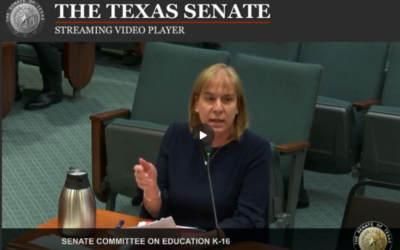
EXPERTS gathered to explore the INNOVATIVE PRACTICES AND UNIQuE HEALTH CHALLENGES IN THE TEXAS BORDERLANDS DURING APRIL 7 SUMMIT
While the health challenges impacting the Borderlands are many, the strong sense of collaboration within the region has created unique opportunities for border communities to innovate and continue improving in the health sector. On April 7, Children at Risk and Texas Family Leadership Council (TXFLC) presented their second annual Border Health Summit to explore the intersection of health and nutrition, preventative care, and the built environment within communities living in the Texas-Mexico border region. This summit offered attendees a snapshot of the policy strengths and advocacy opportunities to promote the best outcomes in health and well-being, both along the border and throughout Texas.
Aligning with the Healthy People 2030 Goals for Border Health, speakers presented multifaceted strategies focused on health education, the environmental factors, and equitable access to care. To set the stage, emcee Deborah Zuloaga, CEO of United Way of El Paso, and special guest El Paso County Commissioner David Stout spoke to the vast distinction of the Texas borderlands when describing the region: 1,254 miles of common border including 28 international bridges and border crossings, inland checkpoints as far inland as 150 miles, a trinational region that is home to two tribal nations.
For this reason, “approaches to local issues in the border communities have to be taken with an international perspective,” Commissioner Stout said, officially welcoming guests to the day’s convening.
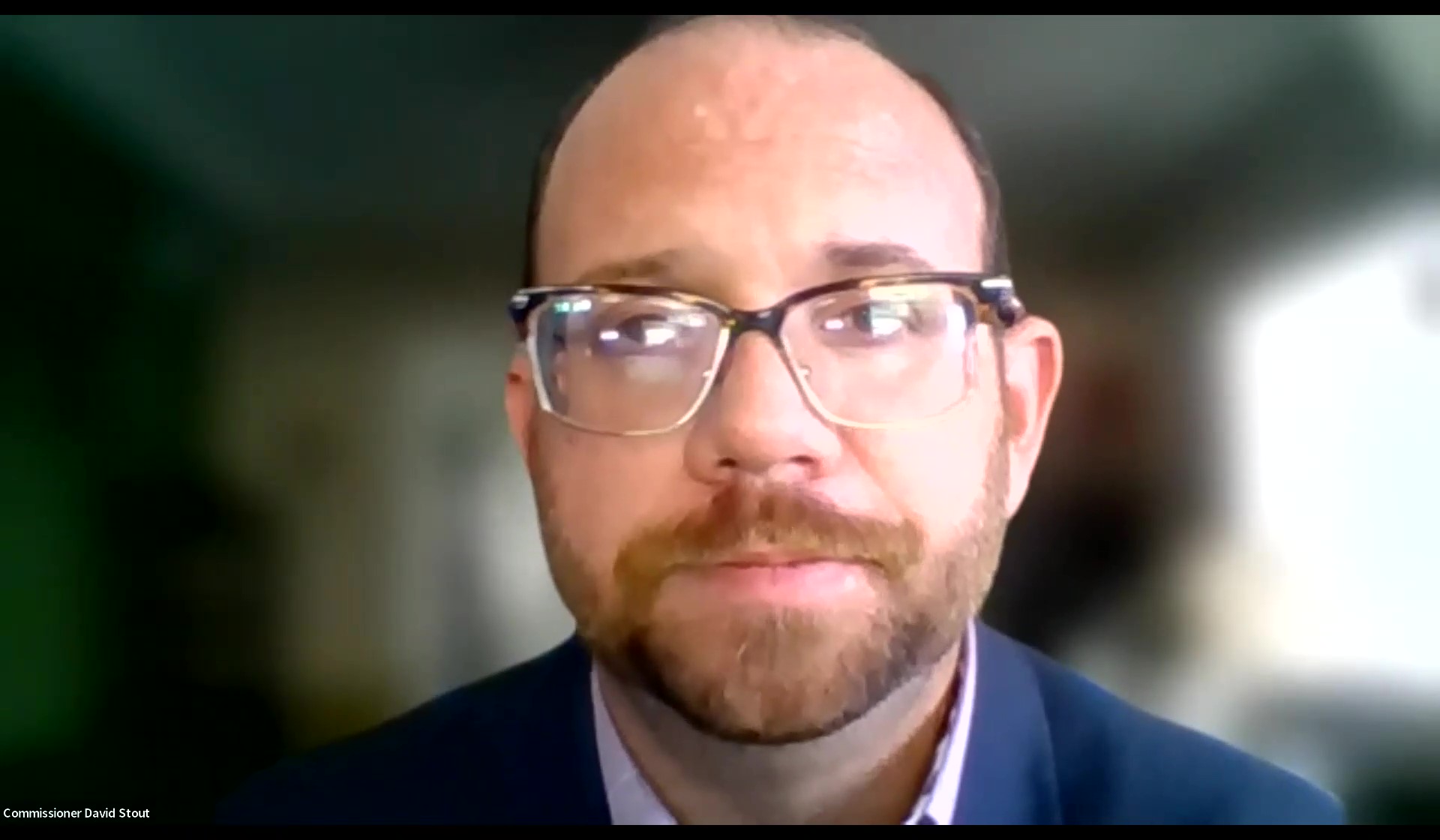
El Paso County Commissioner David Stout makes opening remarks.

Deborah Zuloaga, CEO of the United Way of El Paso County serves as event emcee and host during the summit.
Commissioner Stout continued on, focusing on the social determinants of health such as income, education, and housing. Notably impacting attendees, he shared statistics to illustrate what it means to live in a medically underserved region. For every 2100 people in Hidalgo County, there is only one physician. For every 3,600 people, there is only one dentist. For every 1,500 patients seeking care, there is only one mental health professional.
Next, Dr. Deanna Hoelscher of the Dell Center for Healthy Living presented data from the Texas School Physical Activity and Nutrition (SPAN) surveillance system, which collects data from second, fourth, eighth, and eleventh graders every two years. Sharing about the health status of children in Texas, Dr. Hoelscher juxtaposed the border and non-border averages in healthy habits (such as screen time and physical activity) and outcomes (such as rates of overweight children and obesity). She emphasized that higher rates of food insecurity along the border contribute to child obesity because of a decreased access to healthy foods. Dr. Hoelscher concluded her session by looking to policy solutions as recent health trends indicate that continued improvements in childhood obesity rates along the border are obtainable, when paired with the right resources.
Dr. Carmen Rocco, a community-based pediatrician practicing in Brownsville for 36 years, and Dr. Lisa Ayoub-Rodriguez, an internal medicine pediatrician with Texas Tech, followed Dr. Hoelscher’s presentation to provide a personal perspective on health in the Texas borderlands. The discussion was moderated by Sharmily Roy, Director for Social Measurement and Evaluation with Children at Risk.
Dr. Rocco recalled the impact that COVID-19 and the social determinants of health have on her patient population. She emphasized that access to routine preventive care is a solution to many of the issues she treats, but many of her patients are unable to afford health insurance or they fear that enrolling in public benefits will have an undesired impact on their immigration status. Both panelists emphasized the need for more effective systems to transfer health records and maintain access to follow-up care as patients pass through the border region, which plays a transitional role, onto their next destination in the US.
After this rich discussion, Ruth Mason, Director of Children’s Services at Valley Baptist Medical Center, offered a robust overview of childhood diabetes where she discussed the importance of preventative services such as prenatal care and breast-feeding as early interventions to prevent childhood diabetes. “Breastfeeding can mold a child and promotes lifelong wellness,” Mason said.
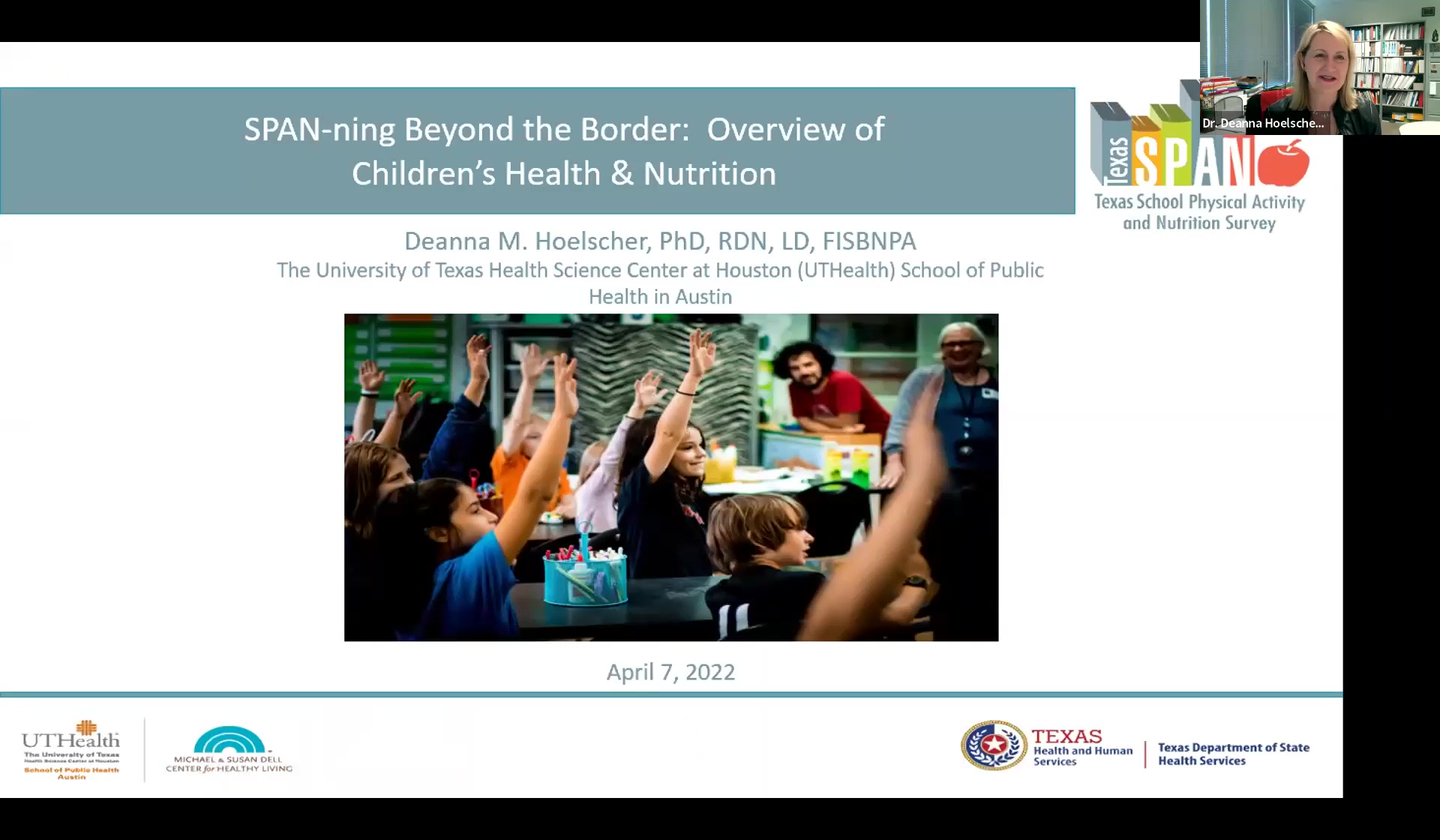
Dr. Deanna Hoelscher of UT Health and the Michael & Susan Dell Center for Healthy Living, provides an overview of children’s health and nutrition in Texas border and nonborder regions.
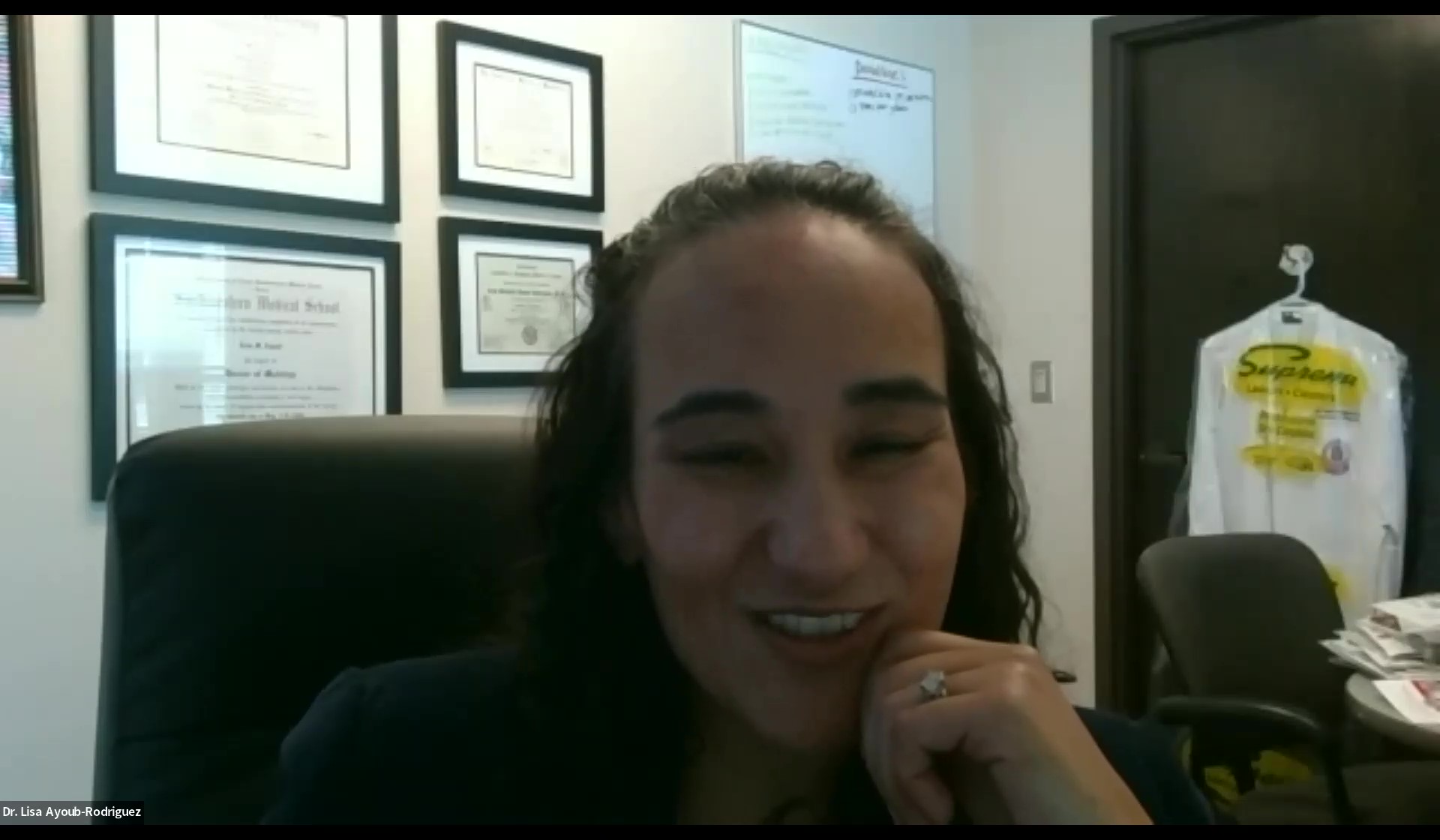
Dr. Lisa Ayoub-Rodriguez participates in a Pediatric Profile panel discussion, sharing her lived experience as a community pediatrician.
Continuing the conversation, Hansel Ibarra from MHP Salud and Denise Vasquez from UT Health spoke to the importance of Community Health Workers (CHW’s) and how they improve health capacity in the Rio Grande Valley and West Texas border areas. Ibarra rooted the conversation with an overview of what makes community health workers or promotor/as so effective – They have a deep understanding of their community’s needs and a specialized cultural competency that can bridge gaps between the affected person, health, and social services.
“CHWs are the ideal communicators, advocates, and connectors because they are trained to provide health education and often, they have the lived experiences of the population we are trying to serve and have the special understanding of what it takes to engage them,” Vasquez observed during the presentation.
“It’s hard to expect someone to pull themselves up by their bootstraps when there are so many factors working against them, and I believe that’s where the CHW comes in and provides the information – through information you get educated and education is power,” Ibarra added.
He went on to share examples of MHP Salud’s Juntos Podemos and Connecting Kids to Care programs, which work with SNAP eligible families in Starr, Hidalgo, Cameron, and Willacy counties. Joining Ibarra in the conversation, Vasquez shared other examples of how CHW’s impact their communities by acting as a liaison, intermediary, or link to connect community members with outreach, screenings, health navigation and applications, and even transportation.
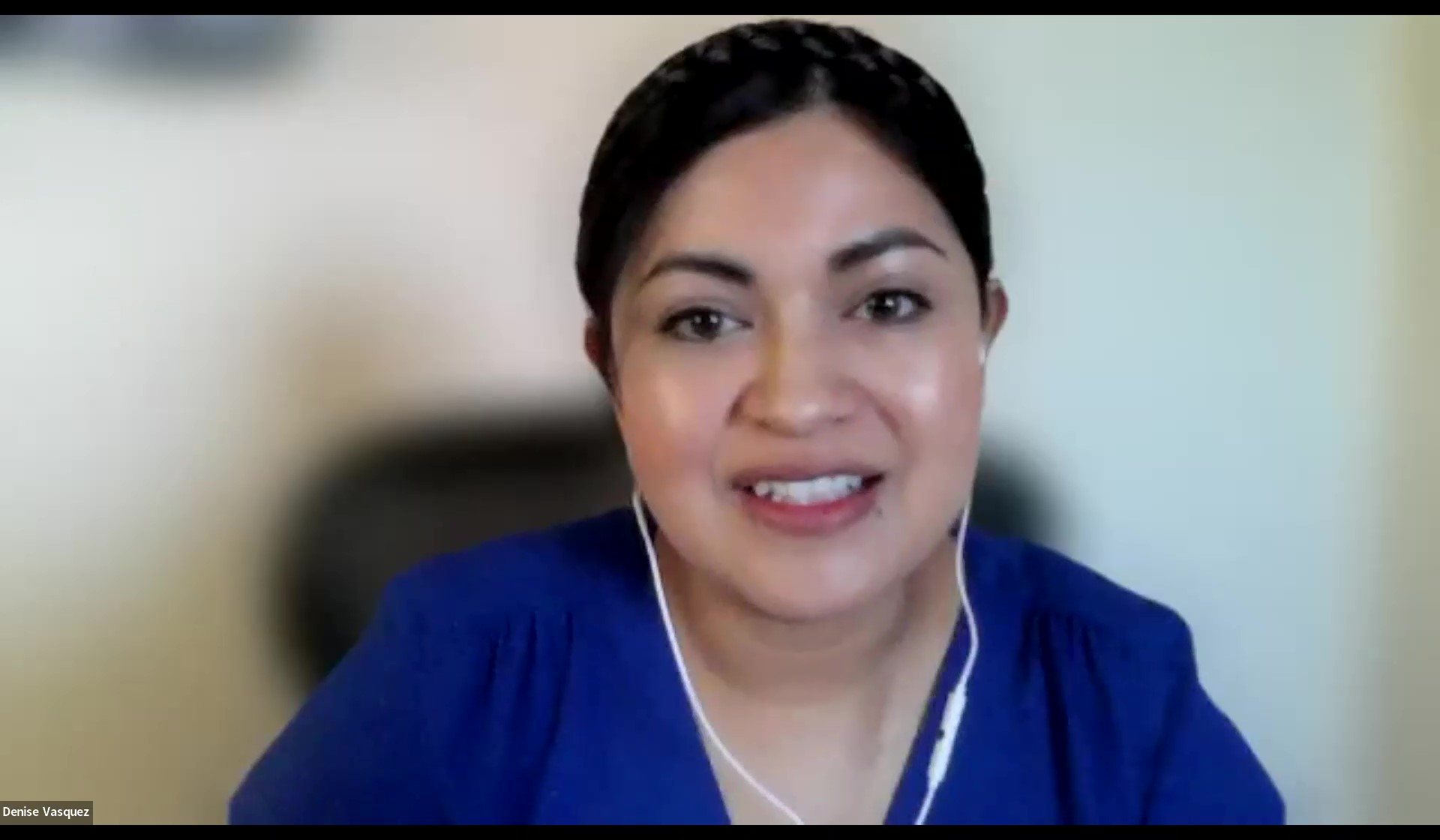
Denise Vasquez, Research Coordinator with UT Health, shares about their efforts to prevent common childhood injuries through education and community outreach.
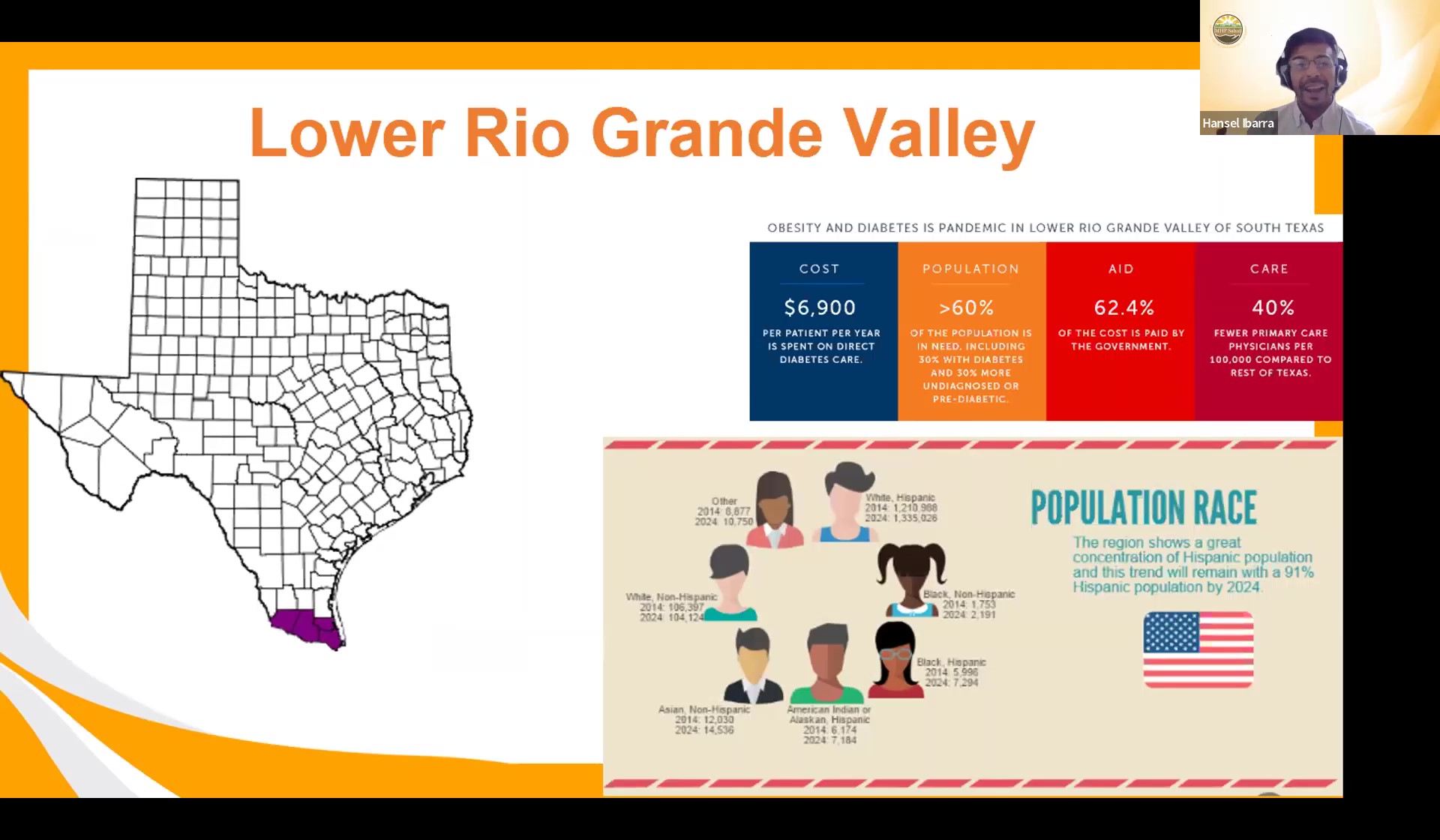
Hansel Ibarra, Program Director with MHP Salud, shares about Promotoro/a’s and their significance in connecting communities with health services.
The program continued with an example of the innovative practices that Dr. Leah Wigham, Director of the Center for Community Health Impact at UTHealth, and her team utilize to increase their impact on Texan communities. Her team works to find community-driven solutions, informed by science and the collective impact model, to address childhood obesity, nutrition, and physical activity. By collaborating with trusted community partners, Dr. Whigham’s team is able to identify issues, engage the scientific community to develop solutions, and track the effectiveness of programs through development and evaluation using shared goals and measurements.
Michelle Smith, Statewide Coordinator with Action for Healthy Kids, and Jana Renner, program officer at the Paso del Norte Health Foundation, described the development of the El Paso Healthy Schools Coalition as an example of this community-based approach during a panel discussion focused on building a healthier school environment. Launching as a pilot project in only three El Paso schools, the El Paso Healthy Schools Coalition began as an assessment and review of wellness policies working with the campuses, School Health Advisory Councils, and community members. The coalition utilized joint-use agreements to expand into the community using school facilities to promote familial physical activity. As they expanded to additional districts, the group focused on the whole child and best practices learned from other districts, such as Pasadena ISD’s Safe Routes to School program.
Gus Kennedy of Communities in Schools in Hidalgo County invited Action for Healthy Kids to expand to the valley and bring their collective impact model to tackle obesity driven by poverty, food insecurity, and safety challenges. Dalinda Alcantar, CEO of Boys and Girls Clubs of McAllen and panel moderator, pointed to the impact of healthy living and nutrition on mental health, education, and the whole child’s wellbeing. She added to the discussion by sharing how community organizations, like The Boys and Girls Club, are strategically positioned to connect marginalized communities with resources and produce a measurable impact.

Dr. Leah Whigham of UT Health and the UT Health Center for Collective Impact, explained their strategic model of using collective impact to improve health outcomes.

David (Gus) Kennedy with Community’s in Schools of Hidalgo County, laughs with panel moderator Dalinda Gonzalez-Alcantar during a discussion on healthy school environments.
Panelist Dr. Juan Antonio Aguilera Mendoza of Stanford University carried the day’s themes of obesity prevention, activity, nutrition, and well-being into the next session on the intersection of health and the environment. He described his research and strategies to collect objective health data. By using tools such as spirometry to measure lung function capacity, skin carotenoids to measure vegetable intake, and air quality monitors for pollution to examine the association between physical activity and pollution, he recorded objective measures not commonly utilized in mainstream health data collection. Dr. Aguilera Mendoza recommended communities improve local tree canopies to improve air quality.
Also joining the panel to examine environmental factors on health, Ersela Kripa and Stephen Mueller of Texas Tech University El Paso and AGENCY shared about their use of computational modeling at POST (Project for Operative Spatial Technologies) and how they use their training as architects to apply research that creates a more accommodating outdoor learning environment in the Chihuahua Desert. Kripa closed the event by calling on local community members to intentionally create healthy spaces for children to grow and ensure that resources are shared equitably.
It’s on us as architects and designers and city policy makers to think through the built environment in terms of zoning, where schools are located, and where are parks and green belts are located that are sustainable in the desert that we can use. [We need] to really think equitably about the built environment and not just to answer a client’s questions or a city’s questions, but to think about who is not at the decision-making table.
This post was written by Sharmily Roy. Roy is the Director of the Center for Social Measurement and Evaluation with CHILDREN AT RISK.
MORE LIKE THIS
The Chutes & Ladders of Learning: C@R’s Annual Education Summit Recap
On Friday, June 6, CHILDREN AT RISK hosted the 2025 Education Summit: The Chutes and Ladders of Learning, bringing together educators, leaders, and advocates to examine the opportunities and challenges shaping Texas education. On Friday, June 6,...
Press Conference: Education, Legislation, and Workforce Alignment in Texas
Changes to school funding, teacher certification requirements, and public education policy poised to reshape academic recovery and career preparation for Texas students. Media Contacts:Morgan Gerri, 832.600.9354Rashena Franklin, 713.301.4577...
2024 Annual Report
Dear Friends and Advocates, At CHILDREN AT RISK, we believe that every child deserves a fair shot at success—and we know that it takes all of us to make that happen. Whether you’re a policymaker, educator, donor, volunteer, or advocate, your...
Standing Up for Children in 2025
On March 28, CHILDREN AT RISK hosted the 2025 Stand Up for Children Signature Event featuring Fred Armisen of Saturday Night Live. Over 430 guests joined to support CHILDREN AT RISK’s Stand Up for Children at The Post Oak Hotel on Friday, March...
Press Conference: Changes at U.S. Department of Education Impact Support for Emergent Bilingual Students
Massive layoffs at the U.S. Department of Education are predicted to impact 1.27 million Texas children Media Contacts:Morgan Gerri, 832.600.9354Rashena Franklin, 713.301.4577 TEXAS (March 19, 2025) – In an unprecedented move, the U.S....
Recap: The State of Black Children in Texas 2025
On February 13, 2025, CHILDREN AT RISK presented the virtual learning summit The State of Black Children in Texas. Each year, the State of Black Children in Texas Summit serves as a call to action—a gathering place for experts, advocates, and...
Advocating in Support of SB 570 & SB 991
Mandi Kimball, Chief Government Affairs Officer with CHILDREN AT RISK, testifies in support of SB 570 & SB 991 during the March 25, 2025 hearing of the Texas Senate Committee on Education K-16. My name is Mandi Kimball, Vice President of...






